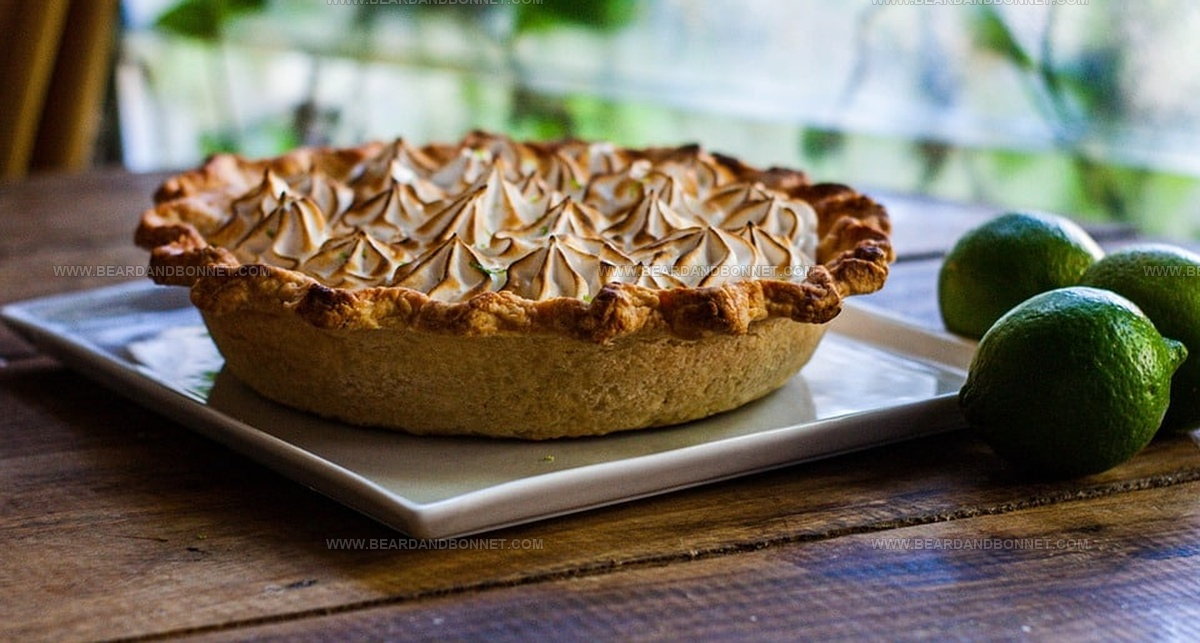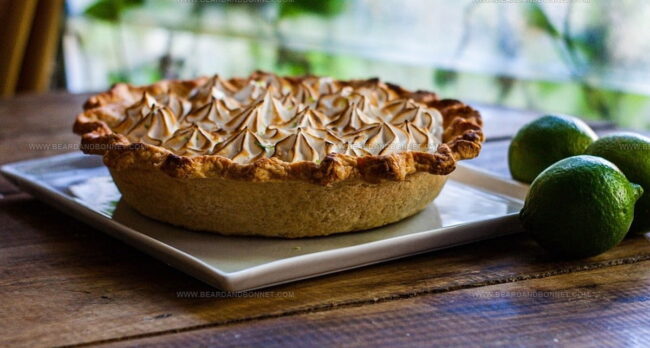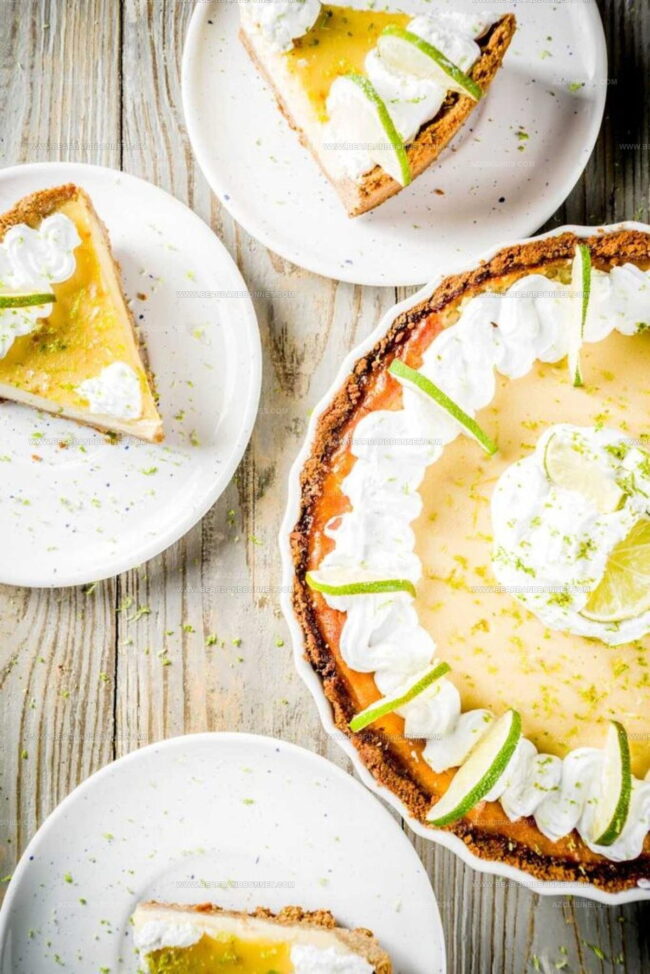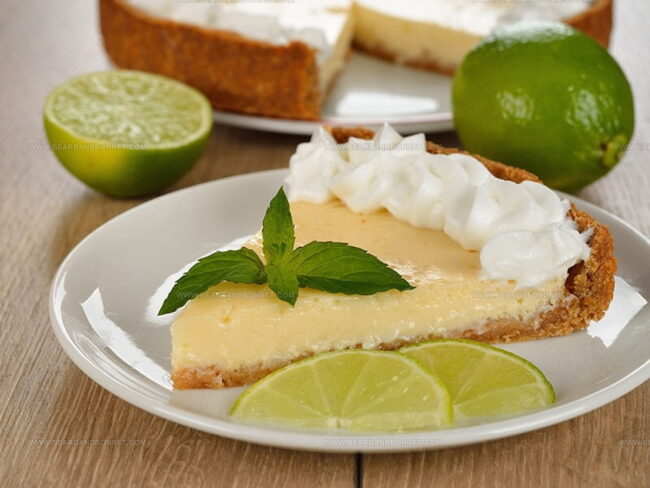What Does Key Lime Pie Taste Like? A Sweet-Tart Dance on Your Tongue
Key lime pie has intrigued dessert lovers for generations with its unique tropical essence.
Many people wonder about the distinctive flavor profile of this classic American treat.
This beloved dessert originated in the Florida Keys, where local bakers crafted a simple yet remarkable culinary creation.
Tangy and sweet sensations dance across your palate when experiencing this iconic pie.
Curious food enthusiasts often ask about its remarkable taste characteristics and what makes it so special.
The combination of ingredients creates a surprising gustatory experience that captivates many dessert enthusiasts.
Your taste buds are in for an unexpected journey through this delightful culinary adventure.
What Is Key Lime Pie?
Key lime pie stands as a classic sweet treat deeply rooted in American cuisine. This dessert primarily uses sweetened condensed milk and key limes to create its signature taste.
Regions like Florida particularly enjoy this pie, where key limes grow abundantly. Restaurants and home kitchens frequently serve this delightful dessert with various styles:
Bakers craft key lime pie with a smooth custard base featuring key lime juice and zest. Chefs typically serve this dessert cold or at room temperature.
Whipped cream and meringue often top the pie, adding extra layers of flavor. Some bakers include:
Flavor profiles change depending on individual preferences and regional cooking styles.
Sweet meringue and tangy whipped cream complement the key lime's distinct taste. Key lime pie originated in Florida Keys, which explains its distinctive name.
Subtle ingredients make this dessert uniquely appealing worldwide.
Understanding key lime pie requires examining its core components.
Despite key limes' reputation for bitter flavor, this pie offers a surprisingly balanced and delightful experience. Careful ingredient selection and preparation transform simple components into a memorable dessert that continues to charm sweet lovers across different regions.
Taste of Key Lime Pie
Key lime pie recipes have been updated and changed in many ways over time.
Still, the main parts stay the same to keep the original taste.
Egg yolks, key lime juice, and sweetened condensed milk form the basic key lime pie mix.
Old recipes did not need baking since the mixed ingredients created a smooth, thick texture.
Modern versions usually cook the pie to avoid raw egg risks.
Seeing key limes might make you think the pie would taste super sour.
Key limes actually have more acid than regular limes.
This means the finished pie can seem slightly bitter.
Sugar balances out that sharp taste, so the pie is not truly bitter.
Sugar, key limes, and other ingredients work together to manage sweet and sharp flavors.
Key lime pie ends up as a super sweet dessert that sits in the most sugary treat group.
Anyone with a big sweet tooth would love this dessert.
How to Make Key Lime Pie
Handy Tips
Graham cracker crusts taste better when made from scratch instead of buying premade ones. Fresh key lime juice provides more flavor compared to bottled versions.
Key lime zest adds strong taste, but watch out for potential bitterness - use less if needed. Short baking time helps this pie set correctly, which takes around 10 minutes.
Expect some center movement while most of the pie looks firm. Chilling matters a lot - refrigerate for minimum 4 hours or wait until morning for best results.
Whipped cream makes an excellent topping, though meringue works nicely too.
Key Lime Pie Texture
Key lime pie stands out with its unique texture that differs from other pies.
Bakers need special care when making this pie to capture its distinct flavor.
Different pie regions might create varied textures that could confuse new cooks.
Successful baking requires watching the pie's center carefully.
Bakers should wait until the middle wiggles slightly.
Filling typically takes 15 to 20 minutes to reach this stage, though oven temperatures can change cooking times.
Careful monitoring helps create the perfect dessert.
Proper key lime pie needs a specific consistency.
Bakers want a texture between liquid and solid, similar to pudding.
Touching the pie should feel firm, with a slight jiggle in the center.
Crispy crust adds another important layer to the pie's overall texture.
Key Lime Pie vs. Lemon Meringue Pie: Taste Comparison
Key lime pie and lemon meringue pie are both classic desserts, but they offer very different flavors and textures:
Key Lime Pie
Made with key lime juice, this pie is tangy, creamy, and just a little sweet.
The filling is smooth and has a refreshing, tropical citrus flavor, usually set in a buttery graham cracker crust.
Lemon Meringue Pie
This pie uses lemon juice for a sharper, brighter tartness and a bolder lemon punch.
The filling is silky and topped with a fluffy, toasted meringue that adds a sweet, airy finish.
Sweetness vs. Tartness
Key lime pie leans more toward a gentle tang with creamy richness, while lemon meringue pie balances strong tartness with a light, sweet meringue topping.
Texture
Key lime pie is velvety and dense, while lemon meringue pie is lighter and fluffier thanks to the meringue.
Both pies are perfect for citrus lovers, but your choice depends on whether you prefer a smooth, mellow lime treat or a zesty, lemony dessert with a cloud of sweet meringue.
Are Key Limes Always Sour?
Key limes carry a smaller size with more acid punch, which might suggest an intense sour result.
Surprisingly, this pie doesn't scream sourness but leans toward bitter notes.
Lime ingredients actually contribute more bitter elements than sharp sour sensations.
Taste buds might detect a subtle mouth-puckering quality.
Key lime pie recipes include generous sugar measurements.
Sugar becomes the dominant flavor profile, softening potential bitter and sour edges.
Sweet characteristics now shine through, masking harsher lime undertones.
Balanced ingredients create a dessert more sugary than tart, offering a delightful smooth taste experience.
How Long to Chill Key Lime Pie?
Health and Human Services recommends staying under three hours for a short answer.
Experts remain uncertain about storage duration after preparation and freezing.
Keeping Key lime pie chilled matters.
Refrigeration helps the pie last two to three days.
Whipped cream topping stays good for 24 hours in the fridge.
Leftovers work well in sealed containers for several days.
Refrigerator storage depends on pie type.
Key lime pie typically features a custard base with graham cracker or cookie crust.
Juice for filling comes from fresh squeezed limes.
Sweetening happens with sugar or corn syrup, sometimes including cooked egg yolks.
Bottled key lime juice works as another option.
Refrigeration becomes necessary only when pie will sit longer than 24 hours.
Is Key Lime Pie Bitter?
Key lime pie offers a delightful balance of flavors that surprises many.
Sweet and creamy, this dessert brings a unique taste experience.
Lime-based treats often challenge taste buds with their distinctive flavor profile.
Some individuals shy away from lime dishes because their palates remain unfamiliar with bold tastes.
Different eating habits shape our food preferences over time.
Limes carry a tangy character that sparks excitement in certain recipes.
Drinks like mojitos and classic key lime pie showcase lime's powerful punch.
Chemical compounds within lime peels create that signature sharp sensation people either love or avoid.
Sourness doesn't automatically mean unpleasantness in this beloved dessert.
Careful preparation balances sharp lime notes with smooth, rich ingredients.
Careful bakers understand how to blend ingredients that make key lime pie both exciting and approachable.
Mild sweetness softens the fruit's natural zesty character, creating a memorable dessert that welcomes curious eaters.
Is Key Lime Pie Good for You?
Key lime pie offers surprising wellness perks.
Key limes pack powerful health advantages, with some medical professionals suggesting them as alternatives to acid-reduction drugs.
Medical research shows these small green fruits contain high amounts of important minerals like calcium, magnesium, and potassium.
Dessert lovers might struggle believing something so delicious could actually support health goals.
Sweet treats rarely come with nutritional bonuses, but key lime pie breaks that pattern.
Most remarkable aspects include zero fat and zero cholesterol, positioning this dessert as an unexpectedly smart choice for health-conscious individuals.
Is Key Lime Pie Unhealthy?
Key lime pie sits proudly on fancy restaurant tables and special event menus.
Sweet flavors dance across taste buds with delightful ease.
Dangerous ingredients hide behind its tempting appearance, waiting to surprise unsuspecting dessert lovers.
Sweet lime treats combine simple ingredients to create magic in baking.
Chefs mix key limes, eggs, and smooth syrup inside a graham cracker or soft cake base.
Whipped cream and bright lime slices complete this classic southern dessert, making each slice look as good as it tastes.
Can You Freeze Key Lime Pie with Condensed Milk?
Key lime pie made with condensed milk can be stored in the freezer.
Creamy desserts have condensed milk and a special ingredient that makes them sweet and thick.
Wrap homemade key lime pie carefully with plastic wrap and then cover with aluminum foil before placing in the freezer.
Frozen pie stays good for about 30 days in the freezer.
Make sure aluminum foil completely covers the pie so no air touches the filling's surface.
This method prevents freezer burn.
Pies with sweet canned filling do not handle freezing well.
When frozen, the filling stays solid, but turns hard and watery after thawing.
Freezing pies is not a typical American custom, but it can be an interesting experiment.
Are Key Limes Sweeter Than Regular Limes?
Lime varieties differ in size and taste, with Persian and Tahitian limes being bigger than key limes.
These citrus fruits carry a delicate peel that makes them less acidic compared to other lime types.
Chefs and home cooks often use lime juice to add zesty flavor to desserts like ice cream or mix it into different dishes for a tangy kick.
Can You Use Regular Lime Juice for Key Limes?
Key lime flavors shift based on what you're baking.
Tarts, cheesecakes, and pie fillings each bring out different taste profiles.
Citrus notes will likely stand out strongly and overpower other ingredient flavors in your dish.
Regular lime juice works perfectly fine as a replacement for key limes in most baking recipes.
Bakers can confidently swap standard lime juice without worrying about major recipe changes.
Is Eating Key Lime Pie Healthy?
Key lime pie offers surprising health perks.
Doctors note key limes pack powerful nutrients that might help reduce acid in some bodies.
Medical researchers point out these small green fruits contain high levels of important minerals like calcium, magnesium, and potassium.
Many people struggle to believe something so tasty could actually support wellness.
Some experts suggest key lime pie stands out as a healthier dessert choice compared to other sweet treats.
Nutrition specialists highlight its unique profile of beneficial ingredients that make this dessert more than just a sugary snack.





Jessica Martin
Recipe Developer & Food Writer
Expertise
Recipe Development, Food Styling and Photography, Seasonal and Local Ingredients, Vegetarian and Vegan Cuisine, Culinary Education
Education
Portland Community College
Oregon Culinary Institute
Jessica Martin is a talented food writer and recipe creator who specializes in seasonal cooking and approachable home baking.
Educated at Portland Community College with additional pastry training from Oregon Culinary Institute, Jessica’s culinary journey spans nearly a decade of creating and sharing flavorful recipes.
Her deep appreciation for local ingredients shapes each of her recipes, making them both accessible and inspiring. At Beard and Bonnet, Jessica uses her cheerful, down-to-earth writing to help readers effortlessly bring new tastes and creative dishes into their daily routines.